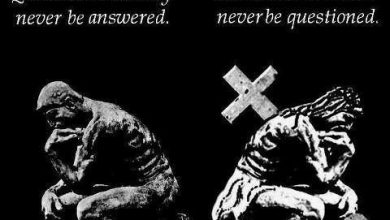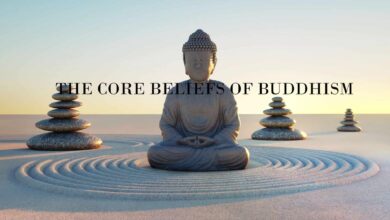Religiosity as an element of human development

Summary:
This study analyzes and interprets religiosity in its territorial context, seeking to apprehend collective identities and the dynamics of religion as properties of these identities. The research was based on the deductive method, and the sources that made it possible were: newspapers, websites, books, articles, interpreted in the light of the categories of religiosity. If religion is linked to a culture, it is important in determining that culture. By sacralizing the world, the religious man attributes the full meaning of sacred space in opposition to everything else, as being without form and meaning.
Keywords:
religiosity; territory; human development; culture
Abstract:
The study examines and interprets religiosity in its territorial context, seeking to understand the collective identities and the dynamics of religion as the properties of these identities.
Keywords:
religiosity; territory; human development; culture
Resume:
L’étude analyse et interpret la religiosité dans son territorial context, en cherchant à comprendre les identités collectives et la dynamique de la religion en tant that proprietés de ces identités. The list is based on the deductive method and the sources that are possible: the journaux, the websites, the free articles, the articles, the interpretation of the religious categories. Pour consecrate le monde, l’homme religieux donne la pleine signification d’an espace sacré, par opposition à tout le reste, comme étant sans forme et signification.
Mots-clés:
religiosity; territoire; le development humain; culture
Summary:
The study analyzes and interprets religion in its territorial context, seeking to understand collective identities and the dynamics of religion as properties of these identities. The investigation was based on the deductive method and sources that were possible: periodicals, websites, books, articles, interpreted in the light of religious categories. If religion is linked to a culture, it is important to determine that culture. In order to consecrate the world, the religious man gives the complete meaning of a sacred space, which differentiates it from all others, because it lacks form and meaning.
Keywords:
religiosity; territory; human development; culture
1. INTRODUCTION
Local Development (LD) is a process in which human relationships have to be taken into account. This process values the man, all the inhabitants of the place, involving the community in a network that expands reaching a planetary reality.
As the DL involves countless reflections, among them is the understanding of religiosity: its manifestations, its rituals, its values, its concepts, and attitudes that are fundamental for the individual’s daily life.
Religiosity builds a universe of reflection that is all special in life, whether individual or social, as it involves a contract, in which the element of hope and meaning in life is fundamental for the development of human beings in their terrestrial trajectory.
In Latin America, religiosity has been built from the European totality on Amerindian and black ‘otherness’, as reflected Dussel (1980), Zea (2005), and is also perceived in the rescue of the criticisms of Friar Bartolomeu de Las Casas (2011) and Francisco de Vitória, an exponent of Salamanca (Spain) when addressing the colonial period within the Baroque Scholastics (PICH, 2012).
Even so, a deep religiosity was built in different regions as a corollary of a culture that is formed in the cellars of colonization, in the hidden parts of the republics, but which explodes in rituals, devotions, pilgrimages, dances, in addition to having its own iconography, such as sumptuous and/or modest temples. Such manifestations are linked to life, local space, and territory as an element that forms the whole of man.
In this way, elements are sought that allow understanding the human being in their locality and the importance of having a religion that serves the individual in its fullness.
2 CONCEPTUAL ASPECTS
The formation of the human being is linked to the construction of the place where he lives, which involves everything from the natural environment (natural landscape) to the influences he received in a past life. These influences shape their individual and social character. He builds himself in a given territory and seeks to be himself in that space, starting to connect with other individuals and with elements that become part of his daily life. In this process, aspects of their formation are found, such as culture, art, religion, law, etc.
To understand this issue, it is necessary to reflect on some important elements, such as the formation of values of a particular place in relation to ethnic formation or elements outside the ethnicity. A sincere and objective reflection on the importance of cultural values is also needed.
Certainly, this epistemological approach to the construction of local spaces obeys the pure cultural values of a group that is constantly influenced by the societal context of insertion.
To comment on the first assertion, the text “The science of custom” by Ruth is taken. Benedict (1934)asserting that the idea of racial purism is a myth. It would also be appropriate to discuss the issue of racial or ethnic heritage. It is generally known what inheritance from father to son is. Within a family line, the importance of heredity is enormous. But heredity is a matter of family lines. Outside of that, it’s mythology. This same author mentioned above also states that, in local communities, racial identity is visible, but that, in a broader community, not even the physical characteristics remain, they undergo changes. In this line of reflection, Benedict (1934, p. 18) manifests himself:




